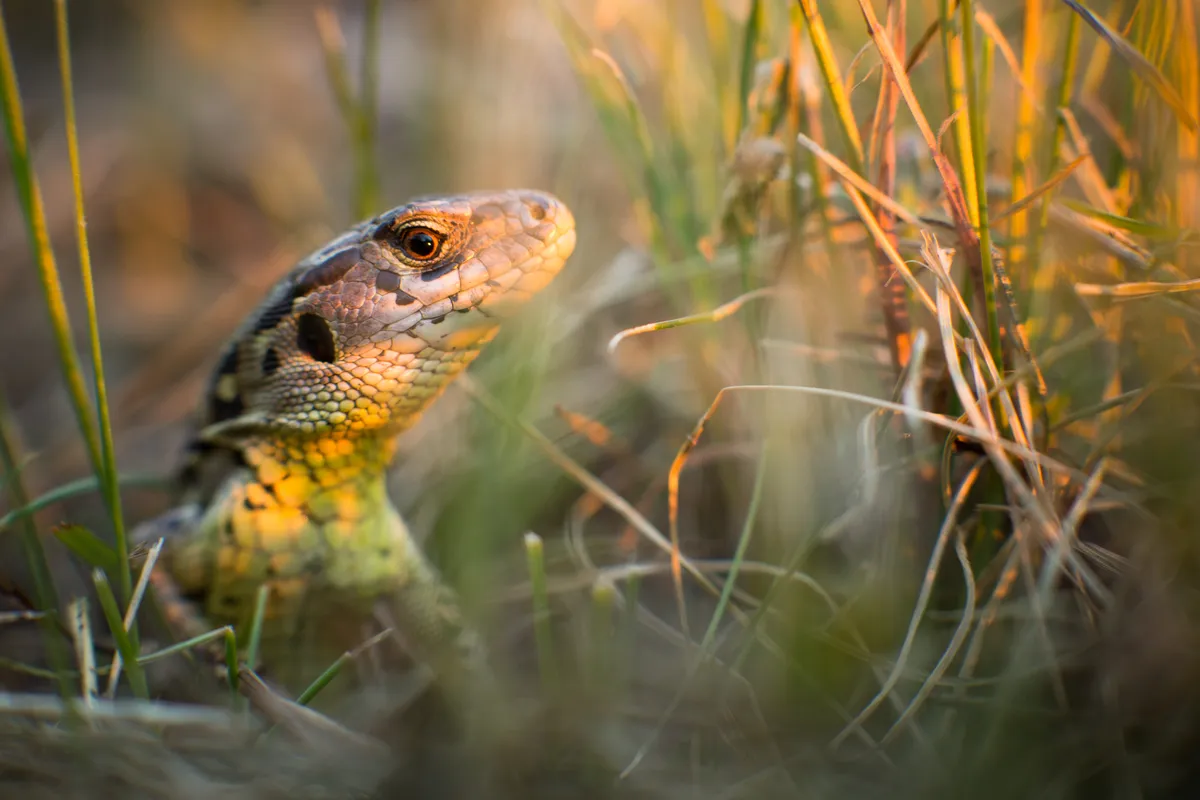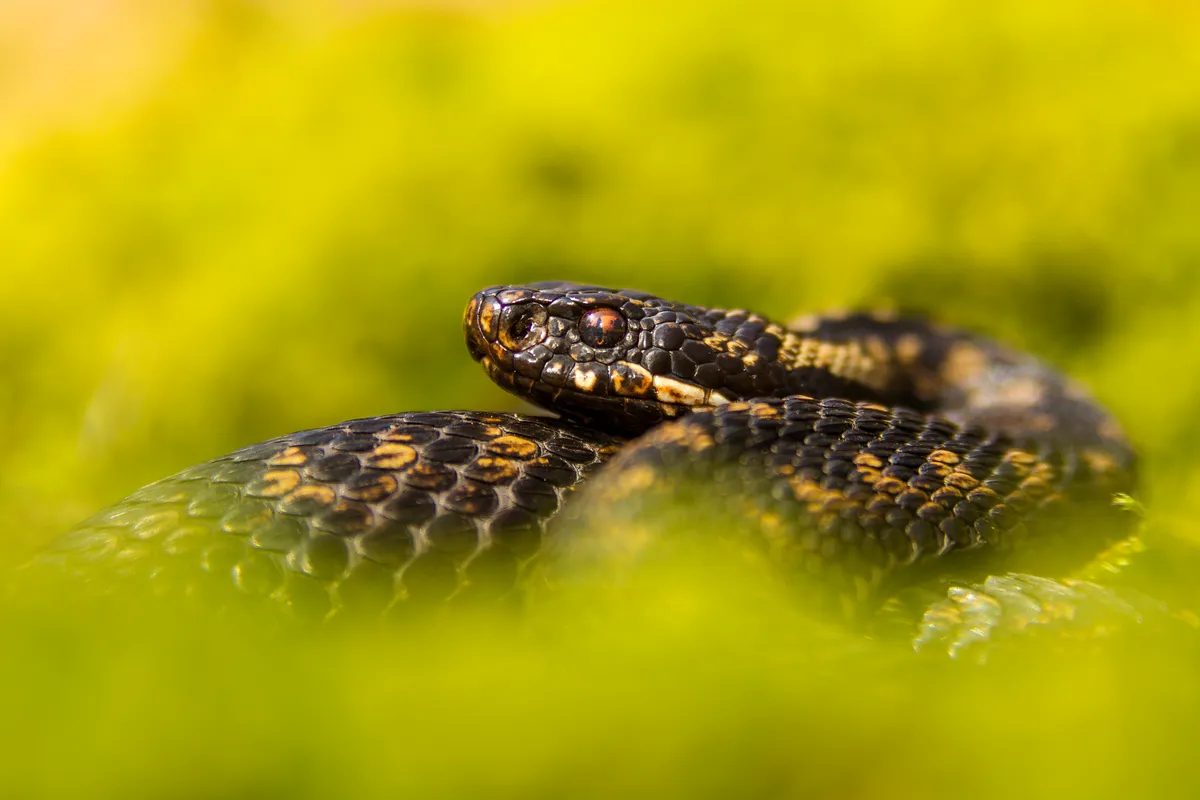Our only venomous reptile, few animals are so tightly enmeshed within the lore and tradition of our natural history than the adder – Vipera berus. Inspiring place names and curious customs, such as a West Country association with the ash tree and the rhyme spoken to heal a bite: ‘Ashing tree, ashing tree, take this bite away from me.’
Sadly, this has led to the adder’s persecution and even today, sensationalist summer headlines fuel the demonisation of the species. Yet, not only are adders shy, biting only as a last resort, but they are in deep decline across much of their range.
Interested in learning more about British wildlife? Check out our guides to snakes, frogs and toads, and deer.
Reptiles of the British Isles
Discover the fascinating world of snakes, lizards and slow worms with BBC Countryfile Magazine's guide to Britain's six native reptiles.

What does an adder look like?
Adders are quite small snakes, the browner females rarely growing over 70 cm in length, with the more silver males somewhat smaller.
Both sexes have the distinctive, dark zig-zag pattern down the back, with eyes of flame and a pupil that is vertically split. Some individuals may be melanistic, a darkening of the skin, a trait that might leave them more conspicuous to predators.
Dogs, who tend to investigate with their nose, are prone to adder bites, but the amount of venom delivered is rarely fatal. Medical treatment should be sort if dog or owner is bitten, but we should cherish the adder and respect rather than fear it.

What does an adder eat?
The adder is Britain’s only venomous snake, and uses its poison to subdue small rodents, lizards and ground-nesting birds.
Adder distribution
Small populations occur in ever-dwindling habitat. With no genes to splice, the isolated colonies become inbred, and a species that is likely already extinct in many midland counties, will be pushed back into the wilds of the north and west and coastal fringes in the east of the British Isles.

Adder habitat
Early spring is a perfect time to spot an adder. They will bask when the air temperature is still quite cold, and a raised, south-facing bank with plenty of cover is a good place to look. They love scrub and woodland edges, also occurring on heath, moorland and coastal links.
